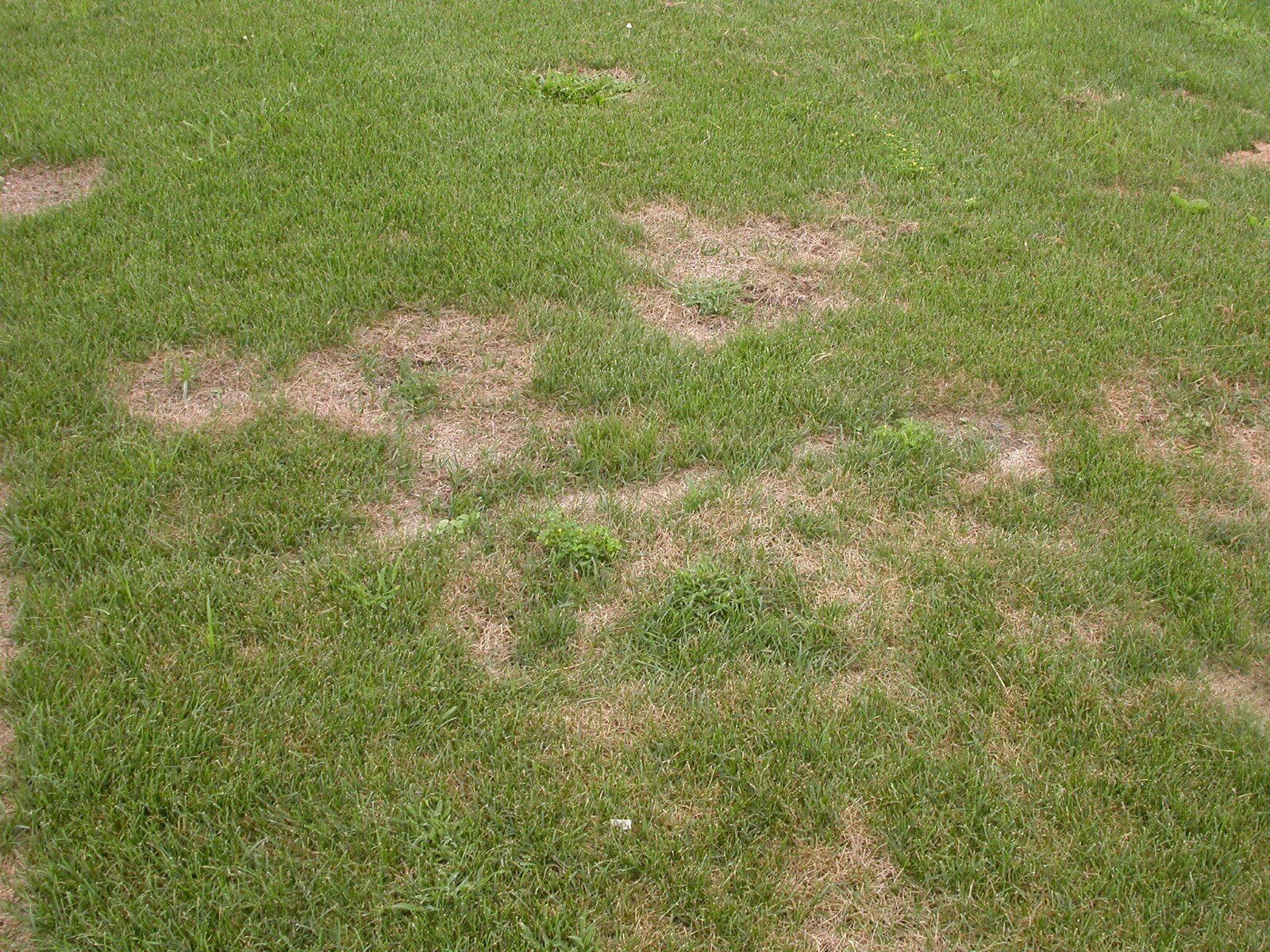
How to Identify and Control Summer Patch Lawn Disease in Indiana

Picture this: Your lawn looks lush and green in the spring. You feel like a proud parent, showing off your perfect, Pinterest-worthy grass. You’re feeling good. And then – bam! – July rolls in, and your beautiful lawn starts getting weird, brown-dead patches like it forgot to put on sunscreen. What happened?
Well, friend, you might be dealing with Summer Patch Disease – a tricky little fungus that plays the long game. So how do you identify Summer Patch? Look for small patches 1-3 inches wide of dead grass. And how do you control Summer Patch disease? A combination of good lawn care practices and fungicides for severe instances of the disease.
Let’s take a deeper dive into what causes Summer Patch, how to spot it, and what you can do to keep your lawn looking its best.
What is Summer Patch Lawn Disease?
Summer Patch Disease unfortunately starts sneaking into your lawn’s root system way back in the cool, damp, spring months. The soil-inhabiting fungus quietly infects the roots, rhizomes, and crowns of your Kentucky bluegrass, messing with its ability to soak up and transport water. Your grass is basically super thirsty, but it just can’t drink. And here’s the kicker: you won’t even know it’s happening until the heat cranks up in the middle of summer. That’s when your grass waves the white flag, those nasty brown patches start spreading, and you’re left wondering what went wrong. The worst part? Once those patches show up, the damage is already done. Summer Patch disease is one of the most damaging turf diseases out there, especially for well-maintained Kentucky bluegrass lawns.
And here’s the kicker: you won’t even know it’s happening until the heat cranks up in the middle of summer. That’s when your grass waves the white flag, those nasty brown patches start spreading, and you’re left wondering what went wrong. The worst part? Once those patches show up, the damage is already done. Summer Patch disease is one of the most damaging turf diseases out there, especially for well-maintained Kentucky bluegrass lawns.
How to Identify Summer Patch Disease
Alright, so your lawn is looking a little rough. But before you start panic-Googling “why does my grass hate me”, let’s talk about how to identify Summer Patch. Because here’s the thing – lawn diseases are sneaky. They’re like imposters of the grass world, often getting mistaken for drought stress, insect damage, and even other lawn diseases. Here’s what to look for when it comes to Summer Patch Disease:
- Symptoms typically show up mid-summer - usually once temperatures crank up
- You’ll first see small patches, 1-3 inches in diameter
- Eventually, these patches can spread up to 12 inches or even form streaks or crescent shapes in your turf
- Unlike Brown Patch, which looks like someone spilled coffee on your lawn and has a weird whitish “smoke ring” around it, Summer Patch makes your grass look dead

Did you know that Summer Patch and Necrotic Ring Spot are extremely similar? Identification of the two lawn diseases is essentially the same. However, Necrotic Ring Spot tends to create larger patches as it progresses, reaching up to 36 inches. The center of Necrotic Ring Spot patches looks like a frog eye, with live grass in the center of the patch.
How to Treat & Prevent Summer Patch Lawn Disease in Indiana
Alright, so you’ve identified Summer Patch as the culprit and now you’re wondering “How do I fix this mess?” The good news? You’ve got options! The bad news? There is no magic cure-all. But with the right game plan, you can treat and even prevent this sneaky lawn disease from ever ruining your turf.
Good Lawn Care Practices Are The Best Defense
Since Summer Patch is all about heat and drought stress, your first step is to keep your lawn as happy and healthy as possible. Here’s how:
Choose the Right Grass
Some Kentucky bluegrass varieties are less susceptible to Summer Patch, so if you’re reseeding, look for tougher cultivars. Or, if you don’t mind a mix, Perennial Rye Grass and Turf-Type Tall Fescue can help fill in problem areas since they are immune to Summer Patch.
Lawn Aeration
This isn’t just fancy lawn talk – aerating your soil can help your grass develop deep, strong roots. Stronger roots mean more resistance to heat, drought, and disease.
Water Wisely
Overwatering encourages fungal growth, but drought stress makes Summer Patch lawn disease worse. The sweet spot? Deep, infrequent watering early in the morning to keep the roots hydrated without creating a fungal playground.
Mow Smart
Keep your grass a little taller (about 3-4 inches) to provide shade for the soil and reduce stress on the roots. Also, make sure your mower blades are sharp – dull blades tear and shred grass, making it more vulnerable to disease.
Fungicides Are An Option, But Not a Cure-All
Fungicides can help reduce the severity of Summer Patch disease outbreaks, but there is a catch: there’s no fungicide that moves down into the roots, where Summer Patch causes damage. That means treatment can be inconsistent, and relying only on fungicides is both expensive and often frustrating.
If you’re going the fungicide route, timing is everything. They work best when applied in late spring before symptoms even show up. But for long-term control? We recommend a combination of good cultural lawn care practices and habits to prevent the disease before it can do any damage.
Partnering with a Professional for Lawn Care in Lafayette and Northern Indianapolis
The secret to beating Summer Patch lawn disease? Stop it before it starts. If you take care of your lawn – choosing the right grass, improving soil health, and keeping up with watering and mowing – you’ll have a much better shot at avoiding those nasty dead patches in the first place.
And if Summer Patch still sneaks up on you? Don’t stress. Diagnosing and treating lawn diseases can be tricky, and sometimes what looks like one problem is something else entirely! That’s where the experts come in. Our team at Shades of Green knows exactly how to tackle Summer Patch – and any other lawn troubles – so you don’t have to play the guessing game.
Want a lawn that stays lush and green all season long? We proudly serve the communities in and around Lafayette, IN as well as the suburbs north of Indianapolis like Carmel, Noblesville, and Westfield. Get started by filling out our contact form!
Image Sources: summer patch lawn disease, brown patch disease
About Cory Overman

Cory is the heart and soul of Shades of Green. His dedication to doing right for our customers has been the driving force behind the company's success. With a degree in Turf Science from Purdue University, Cory continually strives to craft the best treatment plans using the latest technologies and innovative products, ensuring top-notch results for every client.
